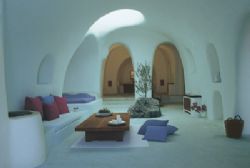
Of all the types of property available in Spain, it is perhaps the Cave House that causes the would-be buyer the most cause for concern. Undoubtedly, this is because of the fact that it is so unfamiliar to those who have not lived in a certain area of Spain before, but why should this fact alone deter so many ?
Tumbit asked Spanish Inland Properties to tell us why Cave dwelling deserves further consideration :
”Cave Houses can be found in quite a few areas of Andalucía where the terrain is suitable and the climate relatively dry. Unsurprisingly cave houses have been around in one form or another for thousands of years and are still with us now, complete with all the mod cons. that you would expect to find in the 21st century.
Most people have never heard of Spanish cave houses and, unless you have been fortunate enough to stay in one, you cannot imagine what life must be like for the modern day troglodytes.
So what are the main differences between a cave house and a conventional bricks and mortar building ?
Locations : Almost all cave houses are build into the sides of a hill in an area which is dry and has rock types that lend themselves to their construction. Virtually every cave house you see when driving around southern Spain was originally dug out by hand in the first 70 years of the last century. Digging your own home out of mother earth and shifting all the resulting rock was an arduous task not to be taken without first carefully selecting your site, after all this was the family home. As a result cave houses are strong, dry and have stood the test of time.
The cave houses of old were the homes of poor peasants and were very basic affairs, no water, no sewerage and sometimes only the very basic electrical supply ( a couple of lightbulbs if you were fortunate). After the 1970s most cave houses were abandoned as the village inhabitants were either forced away by farm mechanisation or the plethora of jobs on the Costas and in the major cities. Abandoned, they may have been, but everyone still had an owner.
During the 1990s rural tourism began to flourish. Supported by government grants, some enterprising individuals started to buy up derelict cave house, modernise them in a very traditional style and rent them out to the curious and those looking for something a little different. It was not long before cave houses pricked the interest of International tourists, closely followed by others who wanted to own their own, giving birth to the revival of the cave house.
Today's modernised cave houses usually have several rooms built on the front of the old traditional cave home. In the conventional build you will usually find living rooms, kitchen, bathrooms etc, basically this is the part for daytime living. The front build has plenty of light through large windows and the cave rooms at the back are mostly used for ‘snug as a bug in a rug’ bedrooms.
It comes as a surprise to some that cave houses can have every modern facility, including electricity, potable water, sewerage, satellite TV, Internet and log burners for winter warmth. If you want, you can have central heating preferably in the form of underfloor heating. As cave houses maintain a relatively constant internal temperature summer and winter, air conditioning is not required. Outside swimming pools are not uncommon.
Because the original cave houses were self-built by hand (architects and developers were totally unnecessary) each one is different and unique in its layout. Internally cave houses are best described as being like the quaint old cottages found in Cornwall and Devon with beamed ceilings and whitewashed walls.
Legally cave houses are treated in the same manner as resales of conventional houses and homes. They have escrituras and are registered in the Land Registry and Tax Office. As such, mortgages and insurance are available so they are safe to purchase so long as you take all the precautions that you should take when buying any property in Spain.
So, if you are looking for a unique, affordable property in southern Spain, Cave Houses are definitely worth a closer look.
Further Resources :










